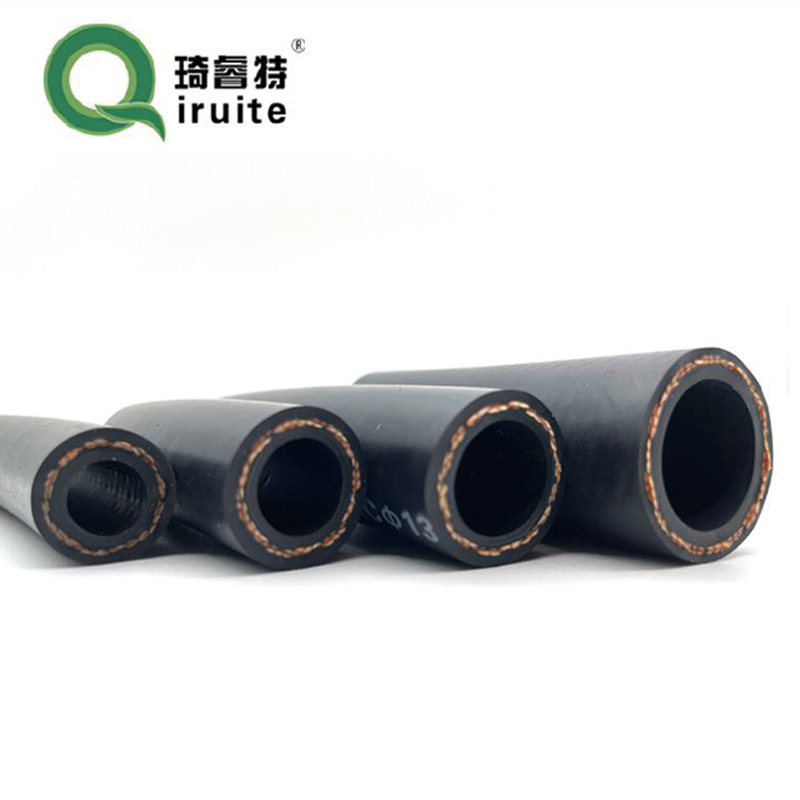r134a adapter fittings
Understanding R134A Adapter Fittings A Guide to Efficient Refrigeration Solutions
Refrigeration is a crucial aspect of various industries, from automotive to commercial cooling systems. One of the most significant advancements in this field has been the introduction of the R134A refrigerant, which is widely used in air conditioning systems and refrigerators. However, to ensure optimal performance of R134A systems, the use of the right adapter fittings is essential. This article explores R134A adapter fittings, their importance, types, and installation procedures.
What is R134A Refrigerant?
R134A, or tetrafluoroethane, is a hydrofluorocarbon (HFC) that has been widely adopted as a replacement for the older R12 refrigerant. The shift was necessary due to environmental concerns associated with chlorofluorocarbons (CFCs) like R12, which contributed significantly to ozone depletion. R134A is less harmful to the ozone layer and is considered relatively safer, which makes it the refrigerant of choice in modern cooling systems.
The Importance of Adapter Fittings
Adapter fittings play a vital role in ensuring the compatibility of different components in a refrigeration system. Since R134A systems often require various parts—from hoses to valves—that may not be directly compatible, the right adapter fittings help bridge these differences. Using appropriate fittings ensures that refrigerant can flow freely through the system without leaks, which can lead to efficiency loss and increased operational costs.
Types of R134A Adapter Fittings
1. Male and Female Adapter Fittings These fittings come in male and female varieties, which allow secure connections between different components. They are available in various sizes and threads to fit different systems.
2. Threaded and Quick-Connect Fittings Threaded fittings require a wrench for secure attachment, while quick-connect fittings allow for easy and fast connections. Quick-connect fittings are particularly popular in mobile applications, such as automotive air conditioning systems, because they facilitate quick service and repairs.
3. Flare Fittings Flare fittings are designed to create a strong leak-proof connection. They are characterized by a cone-shaped end that creates an airtight seal when tightened. This type of fitting is widely used in air conditioning systems that use R134A refrigerant.
4. Compression Fittings These fittings compress a ring onto the pipe as a nut is tightened, ensuring a secure connection. They are often used in high-pressure applications due to their robust nature.
r134a adapter fittings

5. Barb Fittings Barb fittings provide a more straightforward connection method for hoses. The barbed end grips the inside of the hose, offering a reliable leak-proof seal without the need for additional hardware.
Installation Procedures
When installing R134A adapter fittings, it's essential to follow best practices to ensure efficiency and safety. Here are some steps to consider
1. Safety First Before working on any refrigeration system, wear appropriate personal protective equipment (PPE), including gloves and goggles. Ensure that the system is depressurized and that the refrigerant has been safely discharged according to local regulations.
2. Select the Right Fittings Ensure you have the appropriate type and size of adapter fittings to match your system components. Check compatibility by reviewing the specifications of each part.
3. Prepare the Surfaces Clean the threads and surfaces of the fittings to remove any debris, dirt, or old sealant. This step is crucial for ensuring a proper seal.
4. Attach the Fitting Carefully thread the adapter fitting onto the component, taking care not to cross-thread, which can damage the fitting. Use a wrench to tighten securely, but avoid over-tightening, which can lead to damage.
5. Test for Leaks After installation, it's vital to test for leaks. Use a leak detection solution or electronic leak detector to ensure there are no refrigerant leaks.
6. Maintain Regular Checks Regular maintenance of your refrigeration system, including checking adapter fittings for wear and tear, can prevent system failures and costly repairs.
Conclusion
R134A adapter fittings are integral to the efficiency of modern refrigeration systems. By choosing the appropriate fittings and following best installation practices, you can ensure the long-term performance of your cooling systems. As technology evolves, staying informed about the latest advancements in adapter fittings and refrigerant management will contribute to effective and environmentally responsible refrigeration practices.
-
Ultimate Spiral Protection for Hoses & CablesNewsJun.26,2025
-
The Ultimate Quick-Connect Solutions for Every NeedNewsJun.26,2025
-
SAE J1401 Brake Hose: Reliable Choice for Safe BrakingNewsJun.26,2025
-
Reliable J2064 A/C Hoses for Real-World Cooling NeedsNewsJun.26,2025
-
Heavy-Duty Sewer Jetting Hoses Built to LastNewsJun.26,2025
-
Fix Power Steering Tube Leaks Fast – Durable & Affordable SolutionNewsJun.26,2025

